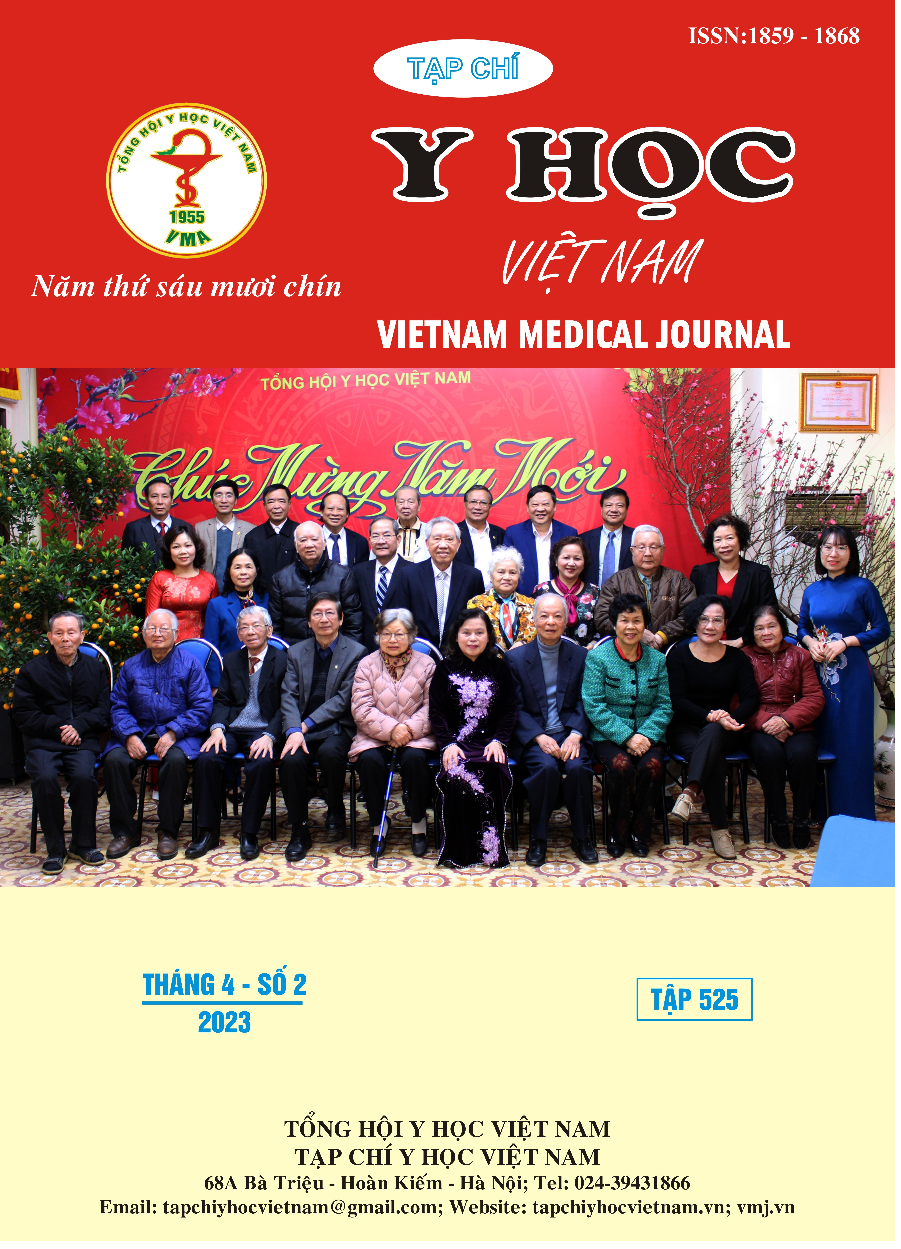SOME CHARACTERISTICS OF INFERTILE PATIENTS WITH IVF TREATMENT IN COMBINATION WITH PREIMPLANTATION GENETIC SCREENING
Main Article Content
Abstract
Objectives: Evaluation of some clinical and paraclinical characteristics of infertile patients were treated with in vitro fertilization at the Military Institute of Clinical Embryology and Histology, Military Medical University. Subjects and methods: The descriptive and prospective study evaluated 186 infertile patients with a history of abnormal gestation, recurrent failed assistant reproduction treatment, or risk factors for abnormalities in chromosomal embryos indicated for in vitro fertilization combined with preimplantation genetic testing for aneuploidies/PGT-A. Results: There was no statistically significant difference in the AFC (antral follicle count) index and AMH (Anti-mullerian hormone) concentration between the three groups, with P(1-2-3); P(1-2); P(1-3); P(2-3) >0,05. Analysis of the number of embryos showed that the number of embryos obtained on day 3 was significantly higher in the group with a history of recurrent pregnancy loss and a history of recurrent failed assistant reproduction treatment compared with the group of advanced maternal age and/or husband with OAT (Oligo-Astheno-Teratozoospermia) (P(1-3)<0.05(0.035);P(2-3)<0.05 (0.045), there was no the significant difference between the group with a history of recurrent pregnancy loss and the group with a history of recurrent failed assistant reproduction treatment P(1-2)=0.25. We found out that the number of blastocysts was not a statistically significant difference in the three groups (P(1-2-3)= 0,054; P(1-2)=0,155; P(1-3)=0,208; P(2-3)=0,093). Conclusion: There were no statistically significant differences in the AFC and AMH between the three gestation history groups in patients with high-risk factors for abnormal chromosomal embryos. Although the number of embryos obtained on day 3 was significantly higher in the group with a history of recurrent pregnancy loss and the group with a history of recurrent failed assistant reproduction treatment than in the group of advanced maternal age and/or husband with OAT, however, there was no statistically significant difference in the number of blastocysts between the three groups.
Article Details
Keywords
RIF (recurrent implantation failure), RPL (recurrent pregnancy loss), PGT -A (preimplantation genetic testing for aneuploidies ).
References
2. Inhorn MC, Patrizio P. Infertility around the globe: new thinking on gender, reproductive technologies and global movements in the 21st century. Human reproduction update. 2015; 21(4):411-426.
3. Cimadomo D, Fabozzi G, Vaiarelli A, Ubaldi N, Ubaldi FM, Rienzi L. Impact of Maternal Age on Oocyte and Embryo Competence. Front Endocrinol (Lausanne). 2018;9:327.
4. Liu X-Y, Fan Q, Wang J, et al. Higher chromosomal abnormality rate in blastocysts from young patients with idiopathic recurrent pregnancy loss. Fertility and Sterility. 2020; 113(4):853-864.
5. Lehmann P, Vélez MP, Saumet J, et al. Anti-Müllerian hormone (AMH): a reliable biomarker of oocyte quality in IVF. J Assist Reprod Genet. 2014;31(4):493-498.
6. Shim SH, Ha HI, Jung YW, et al. Maternal antimullerian hormone as a predictor of fetal aneuploidy occurring in an early pregnancy loss. Obstet Gynecol Sci. 2015;58(6):494-500.
7. Barbakadze L, Kristesashvili J, Khonelidze N, Tsagareishvili G. The correlations of anti-mullerian hormone, follicle-stimulating hormone and antral follicle count in different age groups of infertile women. Int J Fertil Steril. 2015;8(4):393-398.


